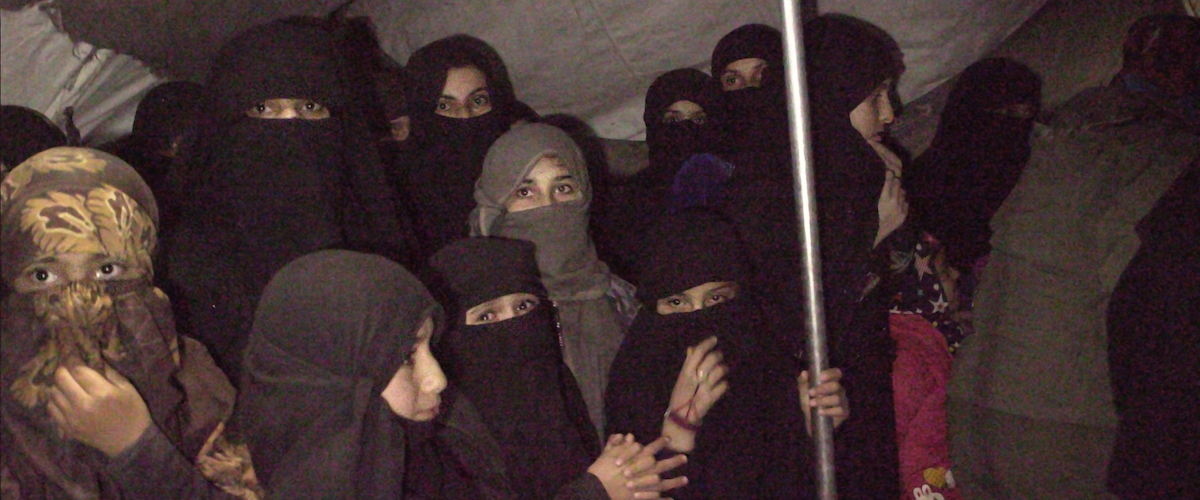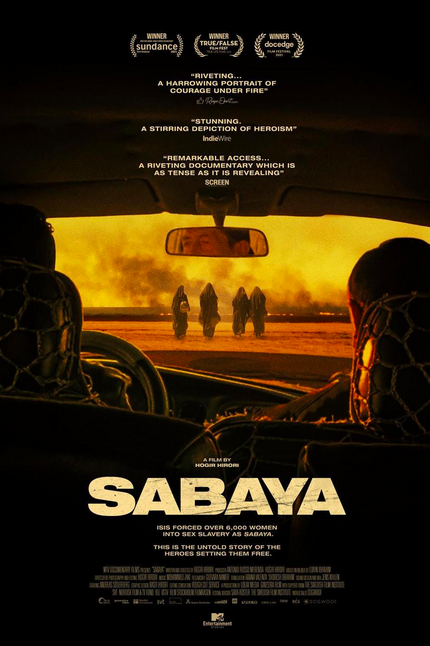There is so much earth-shattering bravery on display in the miraculous “Sabaya” that you wonder how the Swedish-Kurdish director Hogir Hirori managed to pull off a documentary that avoids showy, predictable notes of brouhaha throughout. Rounding off a non-fiction trilogy of sorts after 2016’s “The Girl Who Saved My Life” and 2017’s “The Deminer”—all concerning the wartime plight and cruel abuse of the Yazidis, a religious minority in Northern Iraq—Hirori smartly favors something quiet and reflective instead. With boundless humanism, he chronicles an unremitting rescue mission here—one that unfolds amid unspeakable evil and boldly confronts it.
To grasp the magnitude of the malice depicted in “Sabaya,” one needs to start with the meaning of the word that gives the film its title. There’s no sugarcoating it—sabaya is the name ISIS (or Daesh in its Arabic acronym) has given to countless Yazidi women they have abducted five years ago from the Sinjar province of Iraq (after murdering the men of the population in thousands) and turned into sex slaves. These girls and young women—some, devastatingly, are still children—were sold, raped, and tortured by Daesh ever since under the sham guise of marriage. Most of them, as we learn, are still being kept by Daesh in northeastern Syria’s notoriously dangerous Al-Hol Camp, a settlement that holds nearly 73,000 locked-up Daesh supporters in derelict tents and is guarded by Kurdish forces. In “Sabaya,” Hirori follows Mahmud and Ziyad, two heroic men who volunteer out of the nearby Yazidi Home Center to rescue the sabaya at great personal risk. The pair are supported and enabled by Mahmud’s wife Siham, his mother Zahra, and a group of female infiltrators (some of them, former sabaya) who secretly and selflessly plant themselves into the camp to find Yazidi women that they could help escape through unthinkable nerve and strength.
Picking up a tirelessly ringing phone day in and day out and speaking with desperate Yazidi families looking for their missing kin, Mahmud and Ziyad embark on numerous missions during the film, many of which are bound to end with disappointment and heartbreak. But what a colossal difference the two make on the lives of those they are able to bring back and unite with their forlorn families in Iraq. With the nurturing help of Siham and Zahra and the comforting presence of Mahmud’s young son, the liberated but shell-shocked victims slowly settle under the protective wing of the family, and try to transition to the world on the other side of their now-removed niqabs.
What we perceive in the process is a blend of love, patience, and sympathy as well as a million acts kindness towards these girls and women (some, understandably suicidal) who question their worth and future, wondering how a god that’s supposed to be all benevolent could let this happen. One says, “I hate this world. Everything is black.” Another one soul-crushingly speaks of how she was sold to 15 different men and constantly beaten, retaining destroyed teeth and a hole in her head in the aftermath. Remarkably, Mahmud’s family doesn’t only offer these former sex slaves physical safety—in unison, they provide the girls a path towards psychological healing, too. An example of this is a simple act that symbolizes rebirth—on various nights, Siham burns the sabayas’ former clothes in her home’s courtyard. Her young son spiritedly prays: “I hope God will eliminate these clothes!” As the viewer, you might tearily nod alongside the kid and perhaps even mutter a similarly hopeful wish.
Also the editor and cinematographer here, Hirori remains respectfully observational in “Sabaya.” There are times you wish to hear more from the rescued women and even engage with the heroic female infiltrators further—but perhaps due to understandable safety concerns, Hirori keeps these interactions at a bare minimum. Still, this shortage doesn’t necessarily impede the emotional impact of his film, as Hirori channels a sense of visceral sway through other details: the unfussy domestic rhythms of the Yazidi Home Center, a dog’s bark, close-ups of hands, feet and teardrops lingering on a young woman’s proud face, the faded “Titanic” poster someone optimistically taped up on the closet where Mahmud keeps his gun… Elsewhere, when Hirori’s camera follows the rescuers into the camp, his tone carefully sidesteps thriller-esque indulgences in keeping with the documentary’s overall unobtrusiveness and subtlety. In that regard, what you see in “Sabaya” feels frightening not because of manipulative filmmaking techniques, but because of the undiluted reality Hirori allows you to perceive like a fly on the wall.
With simple title cards at the end, Hirori lays bare some basic stats, both heartening and traumatic. To this day, over 206 women were saved by the Yazidi Home Center. Fifty-two of those gave birth to children. And there are still more than 2,000 abducted Yazidi girls and women missing. Thanks to the fearless “Sabaya,” that last line will become a permanent part of your moral consciousness.
Now playing in select theaters.




















